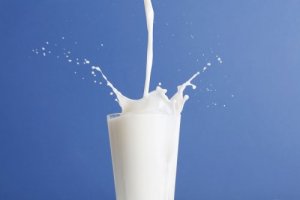Whole Milk vs Low-Fat Milk: Which One is Better?


Written and verified by the nutritionist Eliana Delgado Villanueva
Would you like to know what new the new studies say regarding the health benefits of low-fat vs whole mil? If so, keep reading.
One of the first measures most people take at the beginning of a diet when trying to lose weight is they trade whole milk for low-fat milk. The logic behind it is that a lower intake of calories from fat will lead to weight loss.
On the other hand, some choose to drink low-fat milk simply because they like the taste. They think whole milk is too strong and heavy.
Whatever the reason may be, it’s important to analyze the foods that are part of your daily diet. It’s important to determine if low-fat milk is your best alternative.
Low-Fat Milk vs Whole Milk
The main difference between both types of milk is that the low-fat milk contains a lower percentage of fat, as per its name. Therefore, it has fewer calories.
However, when you eliminate milk fat from your diet you also eliminate fat-soluble vitamins A, D, and E. In any case, nearly all kinds of milk these days are fortified and enriched with all sorts of vitamins and minerals.
However, which version is the most nutritious?
Read also: What’s the Healthiest Milk for Children?
Which is More Nutritious: Whole Milk or Low Fat Milk?

As we mentioned above, the main difference resides in the percentage of fat contained in the milk and it impacts both calories and taste.
Not only that, when losing its fat, low-fat milk also loses fat-soluble vitamins that are characteristic of milk. This includes vitamin A and vitamin D, also known as calciferol. In addition, a certain minor proportion of vitamin E or tocopherol is lost naturally during skimming.
According to professor Sergio Casalmiglia, a professor at the University of Barcelona, by losing these vitamins, people also lose part of the calcium absorption capacity. This is because our digestive system collects it better when in the presence of fat and milk vitamins.
Currently, processed low-fat milk isn’t too different regarding fat-soluble vitamins and the amount of calcium it contains because it has added vitamins A, D, and E. However, whether you can absorb them is a different matter.
These vitamins aren’t necessarily synthetic, but they don’t come from the extracted fat, either. Therefore, both kinds of milk are equal in terms of vitamin and mineral content nowadays, but one has fewer calories.
What Do Studies Say?
A 2017 study published in The American Journal of Nutrition claims that the intake of whole milk cheese and yogurt doesn’t lead to weight gain. On the contrary, it could actually help prevent it.
The same goes for diabetes. These are benefits that, according to the study, consumers of low-fat products can’t obtain.
Another study concluded that drinking whole milk could prevent diabetes. Throughout this research, they analyzed 3,000 human blood samples over 15 years. They found that people who consumed whole milk were 46% less likely to have this disease.
Furthermore, a researcher from the University of Harvard, Mohammad Yakoob, didn’t find any link between the intake of whole milk and obesity or diabetes in a meta-analysis he did of medical records in the USA. On the contrary, his review suggests that consumers of whole milk are, in fact, more protected.
Read also: Whole Milk Yogurt or Low-Fat Yogurt? Which is Best for Your Diet?
Studies in Children

A study published in 2016 analyzed the diet of 2,700 children between the ages of 2 and 6. Its results proved that children who drink whole milk have a lower body mass.
Dr. Dariush Mozaffarian says: “I think these results indicate that we need a change in the policy that recommends low-fat dairy products. Evidence proves that those who consume whole milk diet are in better shape than those who stick to a low-fat milk diet.”
Overall, we hope you gained some knowledge about the degree of nutrition provided by low-fat and whole milk. For now, it seems the aforementioned studies indeed enlightened us a bit.
All cited sources were thoroughly reviewed by our team to ensure their quality, reliability, currency, and validity. The bibliography of this article was considered reliable and of academic or scientific accuracy.
- Mozaffarian, D. (2016). Dietary and policy priorities for cardiovascular disease, diabetes, and obesity: a comprehensive review. Circulation, 133(2), 187-225. https://www.ahajournals.org/doi/full/10.1161/CIRCULATIONAHA.115.018585
- Thorning, T. K., Bertram, H. C., Bonjour, J. P., De Groot, L., Dupont, D., Feeney, E., … & Givens, I. (2017). Whole dairy matrix or single nutrients in assessment of health effects: current evidence and knowledge gaps. The American journal of clinical nutrition, 105(5), 1033-1045. https://www.sciencedirect.com/science/article/pii/S0002916522048705
- Yakoob, M. Y., Shi, P., Hu, F. B., Campos, H., Rexrode, K. M., Orav, E. J., … & Mozaffarian, D. (2014). Circulating biomarkers of dairy fat and risk of incident stroke in US men and women in 2 large prospective cohorts. The American journal of clinical nutrition, 100(6), 1437-1447. https://www.sciencedirect.com/science/article/pii/S000291652304844X
- Wang, T. J. (2016). Vitamin D and cardiovascular disease. Annual review of medicine, 67, 261-272. https://pubmed.ncbi.nlm.nih.gov/26768241/
This text is provided for informational purposes only and does not replace consultation with a professional. If in doubt, consult your specialist.








